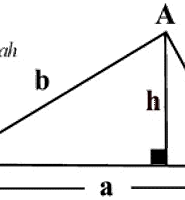| 일 | 월 | 화 | 수 | 목 | 금 | 토 |
|---|---|---|---|---|---|---|
| 1 | 2 | 3 | 4 | 5 | ||
| 6 | 7 | 8 | 9 | 10 | 11 | 12 |
| 13 | 14 | 15 | 16 | 17 | 18 | 19 |
| 20 | 21 | 22 | 23 | 24 | 25 | 26 |
| 27 | 28 | 29 | 30 |
- 영국
- mathematics
- College
- a-level
- algebraic
- 적분
- 학년
- triangle
- Admissions
- fractions
- Partial
- t-치환
- 교육
- Weierstrass
- equation
- Order
- differential
- division
- factor
- Oxford
- 바이어슈트라스
- 치환
- GCSE
- test
- DENOMINATOR
- 제도
- Maths
- solution
- integral
- factors
- Today
- Total
Cambridge Maths Academy
3. A question on trigonometry (Eton College 01C_MT1 Q15) 본문
3. A question on trigonometry (Eton College 01C_MT1 Q15)
Cambridge Maths Academy 2020. 12. 9. 03:05
수학 모음 (Maths collection) 전체보기
This question comes from a test paper for A-level maths for Michaelmas Term at Eton College.
Q15. (a) Express cos(2θ)+sin(2θ) in the form Rsin(2θ+α) where R>0 and 0<α<π2. [3 marks]
(b) Hence show that 1−√22≤cosθ(cosθ+sinθ)≤1+√22 for all real θ. [3 marks]
Solution. (a) This is to find the harmonic identity. cos(2θ)+sin(2θ)=Rsin(2θ+α)=R(sin2θcosα+cos2θsinα)=(Rsinα)cos2θ+(Rcosα)sin2θ Equating the cofficients yields the following simultaneous equations for R and α, {Rsinα=1Rcosα=1 which yields (i)R2(sin2α+cos2α)⏟=1=R2=2⇒R=√2(ii)RsinαRcosα=tanα=1⇒α=tan−1(1)=π4 Thus we obtain cos(2θ)+sin(2θ)=√2sin(2θ+π4)
(b) Using the double angle formulae, we can re-write the LHS of (a) as follows. cos(2θ)+sin(2θ)=(2cos2θ−1)+2sinθcosθ=2cosθ(cosθ+sinθ)−1 So the result of (a) now reads 2cosθ(cosθ+sinθ)−1=√2sin(2θ+π4) For the RHS, we also note that −1≤sin(2θ+π4)≤1⇒−√2≤√2sin(2θ+π4)≤√2 and find −√2≤2cosθ(cosθ+sinθ)−1≤√2⇒1−√2≤2cosθ(cosθ+sinθ)≤1+√2⇒1−√22≤cosθ(cosθ+sinθ)≤1+√22✓
'수학 모음 (Maths collection) > Technical B - Problem solving' 카테고리의 다른 글
| 6. Probability - Jumping goldfish (GCSE) (0) | 2020.12.29 |
|---|---|
| 5. A counting problem - Lucy & Anton in the photo (GCSE) (0) | 2020.12.29 |
| 4. A question on logarithms (Eton College 01C_MT1 Q16) (0) | 2020.12.09 |
| 2. A question on exponential decay (Eton College 01C_MT1 Q14) (0) | 2020.12.09 |
| 1. 헤론의 공식 유도 (A derivation of Heron's formula) (0) | 2020.06.22 |

